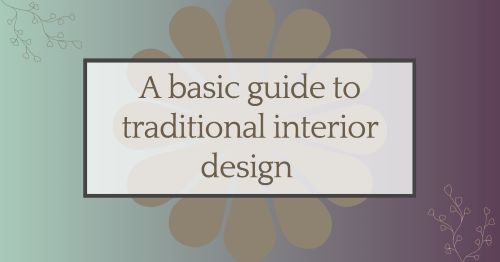
Ready to start decorating your space? Traditional design styles are a great option to try! Traditional interior designs are classic and sophisticated. This style is simple but in no means boring. Here’s a beginner’s guide to traditional interior design for those considering the style.
So, what is traditional design style? Traditional style is known for embellished details. Soft lines and curves which create the feeling of grandeur. This type of design is heavily influenced by the 18th and 19th century and takes inspiration from cultures all over the world.
For example, a traditional living room may have Victorian-style sofas. This furniture is often wide, with neutral tones, curved lines and often has tall backs.
Fabrics used to adorn traditional interiors are usually heavy. They are often patterned with flowers, velvet and other bold prints. For example, think of long, heavy green curtains with flowers covering the length of the material.
With traditional interior style, you have to go big! Details of furniture and decor have key features of long curves and bold patterns. Traditional rooms may have large columns with an abundance of wood panels. Traditional interior design utilizes even small details such as crisp carving of material to present a grand appearance.
Often, traditional interior design style uses dark and warm shades. These darker backgrounds make for an excellent canvas to really make patterns used over these hues pop.
Overall, traditional interior design is elegant and classy. It uses fine lines, curves and bold prints to create a sense of splendor. To learn more about this style, consider speaking with a local interior designer.

There are many qualities and skills that go into being an excellent real estate professional - integrity, in-depth community and market knowledge, marketing savvy, effective negotiation skills and a high-quality professional network, all of which are hallmarks of how I work.